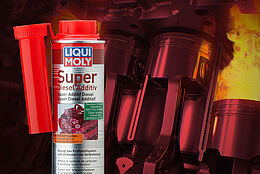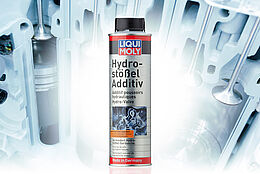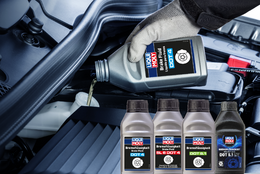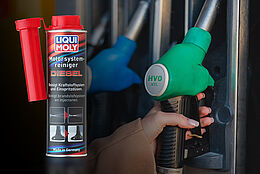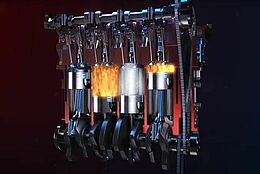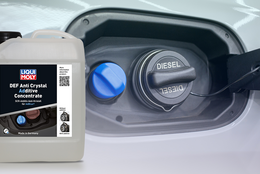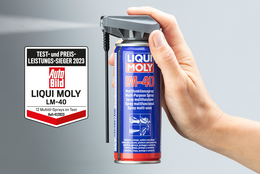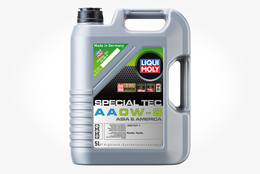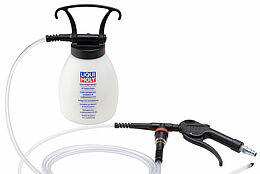- 02/11/2025
- 8min
When are shortened oil change intervals useful?

There is no such thing as a vehicle that doesn’t need maintenance! For many assemblies and operating fluids, regular monitoring and fluid changes are essential to ensure the operational reliability and road safety of the vehicle. The trend towards ever smaller but more powerful engines leads to significantly higher demands on the motor oil. High oil temperatures, increased bio-fractions in fuels and long change intervals cause the oil to suffer.
How important is engine oil for the performance and service life of your engine?
Thanks to its lubricity, motor oil ensures that the moving parts of the engine do not rub against each other and seize up. In addition, the engine oil also performs a cooling function for thermally loaded components. It provides a fine seal between the oil scraper ring and the cylinder wall, and also protects against corrosion. At the same time, it serves to clean the engine. It binds dirt particles such as soot, ash and abrasion, which are filtered out via the oil filter. Because both components, i.e. oil and filter, “wear out” over time, they must be replaced regularly. Regular oil changes are crucial for the performance of the engine and extend its service life.
Choosing the right oil and determining the optimal oil change interval are important aspects of vehicle maintenance. The oil change interval is determined by the engine type and driving style. Depending on the vehicle manufacturer, this is typically between 15,000 and 40,000 km. Regular checking and adjustment of the change intervals is important to prevent engine damage and optimize the service life of the engine. However, oil change intervals should be adapted to the individual driving conditions.
Find a LIQUI MOLY service workshop near you
Do you also want as much of the deposits as possible removed from the oil system and signs of wear on engine components to be reduced as far as possible? Then you should definitely have the oil change carried out by a professional! We will be glad to advise you in your LIQUI MOLY service workshop.
Is an oil change necessary every year?
If you use your vehicle mainly in urban traffic, the oil ages faster, as the engine often does not reach the optimal operating temperature, and therefore the fuel in the oil cannot evaporate. Fuel increasingly gets into the motor oil when driving short distances or when the engine is cold. In this case, it is advisable to change the oil more frequently, preferably once a year, or more often if necessary. The manufacturer’s specifications regarding approval, viscosity and oil change intervals should always be observed. Depending on individual use and driving conditions, these may or should be adapted.
What are difficult operating conditions and what are the manufacturers’ recommendations?
Some vehicle manufacturers explicitly prescribe modified maintenance schedules or maintenance/service intervals in the operating instructions. Make sure that you check the information in the vehicle manual. For example, maintenance work and service scopes must be carried out more frequently if the vehicle is mainly or regularly used under difficult conditions. As a rule, the change interval is halved. Depending on the vehicle manufacturer, however, the modified change interval can also be as little as 1/3 of the maximum permissible interval. The service interval display is only an aid.
The driver of the vehicle is responsible for carrying out maintenance work and servicing more often than prescribed due to the actual operating conditions and/or loads. Severe conditions and thus reasons for shorter manufacturer change intervals can be, for example, the following:
- Repeated driving over short distances of less than eight kilometers at normal temperatures or less than 16 kilometers in frosty conditions
- Excessive idling or driving at low speed for long distances
- Frequent driving in stop-and-go traffic
- Driving in an area with heavy traffic, e.g. city traffic
- Vehicle speeds above 170 km/h
- Repeated driving uphill, downhill or over mountain roads
- Towing a trailer or using a roof rack
- Driving on dusty, muddy, uneven and unpaved roads covered with gravel or de-icing salt
- Use as an emergency vehicle, taxi or other commercial use as a towing vehicle
- Frequently interrupted regeneration of the particulate filter
Consequences of difficult operating conditions
Severe operating conditions and/or stress are the trigger for contamination in the oil. Fuel ingress destroys the oil film. The lubricity, load-bearing ability, dirt-bearing capacity and long-life capability are reduced as a result and metal-to-metal contact and thus increased wear can occur. Dust and salt have an abrasive effect and can lead to the formation of mirror surfaces on cylinder barrels, to bearing damage and to turbocharger damage.
Note: If the oil is not changed regularly and in good time, there is a risk of serious engine damage.
Use our additives against stresses in the engine
Additives can reduce the stresses. For instance, Viscoplus for Oil can compensate for viscosity losses. It provides an improved movable seal between the piston and cylinder, counteracts the dilution of the engine oil during frequent cold starts and provides excellent protection against mechanical shear loss of the oil.
Basic protection against wear
Wear protection additives such as Cera Tec, Oil Additive or Motor Protect reduce friction and wear in the engine and are ideal for highly stressed engines such as tractor vehicles, towing vehicles or vehicles that are used for stop-and-go driving or city traffic or in mountainous regions.
Simple solution to stop leaks and spills
A common problem in engines that are operated repeatedly under difficult operating conditions and therefore have fuel in the oil is leaks. The fuel destroys the softeners in plastic and rubber seals. This results in oil leaks.
If oil consumption or oil loss occurs due to brittle rubber or plastic seals, this can be minimized with our Motor Oil Saver. It contains polymer swellers, which make plastic and rubber seals elastic again and swell slightly. As a result, the seals are slightly tighter and seal off properly again. The sealing effect occurs after approx. 600–800 km. Oil Loss Stop can also be used preventively.
Brake fluids should also be changed regularly
The vehicle manufacturers base their maintenance specifications on normal, average conditions. The manufacturer specifies exactly what should be renewed during servicing. For example, brake fluids must be replaced mainly due to water absorption. Which means: after a fixed period of time. The mileage and operating conditions of the vehicle have no influence on this.
Note: The situation in the engine is similarly to be found in the automatic transmission, manual transmission, axle drive and other major assemblies. Here too, the fluid change intervals should be adapted to the load or operating conditions. Check the oil level regularly. If this increases (e.g. due to fuel or water entry), this is a warning sign that should not be ignored.





